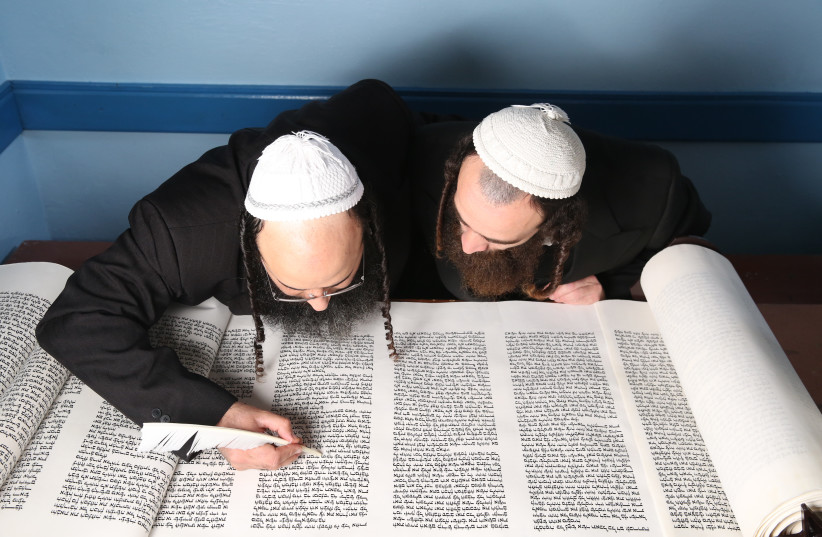Hayim Nahman Bialik, the great Hebrew poet of the Zionist renaissance, wrote that “reading a poem in translation is like kissing a woman through a veil.” But Bialik’s criticism of translation is not only limited to poetry but to all literature, even the Hebrew Bible and other great works of religious faiths. For example, both the concept of “gilgul nefashot” in Lurianic Kabbalah and aspects of “karma” in Hinduism and Buddhism are translated as “reincarnation.”
“Reading a poem in translation is like kissing a woman through a veil.”
Hayim Nahman Bialik
Yet, the Lurianic transmigration of souls and the concept of karma are radically different and the products of specific cultures at different times. It is not as if a Zen Buddhist met a hassidic rebbe somewhere between Europe and Asia in the 18th century, with both men agreeing to formulate the concept of the reincarnation of the soul. The English word “reincarnation” robs the concept of its specificity of different places, times and cultures.
The same can be said about “atonement.”
We have just concluded the season of repentance in the Hebrew calendar. But we used the English word “atonement” for three distinct Hebrew words: kapparah, selichah and mechilah. But the English translation of these Hebrew words obliterates the nuances of each of these in the Hebrew original. Each word is a different mechanism of atonement and we don’t do justice to the spectrum of repentance by ignoring the differences. One has to know the meaning of related words in Biblical and Rabbinic Hebrew to be exact in the definition.
The Jerusalem-based Veromemanu Foundation for Research of the Holy Tongue was formed in 2002 by Yehoshua (Jeremy) Steinberg with the mission of spreading the profoundly beautiful wisdom of the Biblical Hebrew language. Rabbi Steinberg’s organization is devoted to Hebrew as the divine language of Creation and Revelation and a belief that within the words of the Holy Tongue there are hidden treasures and life’s lessons embodied in every precious word.

Rabbinic commentary and Midrash are central to the mission of the foundation in plumbing the depths of Biblical etymology. Rabbi Reuven Chaim Klein, the main writer for Veromemanu’s website, is the author of God versus Gods: Judaism in the Age of Idolatry (2018).
HE HAS written extensively for many journals and has composed an excellent essay on the knotty problem I posed at the beginning of this essay: the different meanings in Hebrew of the poorly translated word “atonement.” He takes a very complex subject and takes it apart piece by piece so that it is comprehensible. I cannot possibly summarize this particular essay. It was posted on the Ohr Somayach website in September 2019. I recommend it.
Founder Rabbi Steinberg has an impressive resume in Jewish education and the rabbinate. He has received degrees in history, computer science and education, as well as working as a software engineer for AT&T and Digital Equipment Corp.
Following the radical Islamic terrorist attacks of September 11, 2001, he was called up to active duty as a chaplain in the United States Army, serving overseas for 12 years, including in Iraq and Afghanistan. He lives in the hills surrounding Jerusalem with his wife and children and is the foundation’s director and editor-in-chief.
I respect him for his love of the Hebrew of the Bible and Midrash, although my encounters in university with Biblical etymology – different than that in my yeshiva training – were within the larger scope of many ancient Middle Eastern languages, I have always admired the creativity of those studying Biblical Hebrew in a sophisticated traditional mode. This type of etymology has a long, scholarly and imaginative history.
One example of Midrashic creativity that appears on the foundation’s website involves the nachash (serpent) fashioned by Moses as directed by God to end a plague ravaging the Israelites (Numbers 21:8). The text does not mention the composition or appearance of the serpent. But the rabbis of the Midrash came up with an ingenious solution. “Nachash” is closely related to the Hebrew word for copper (“Nechoshet”) and so Moses fashions a serpent of copper.
Rabbi Steinberg uses this as an example to buttress the Midrash’s claim that “the Torah was given in the Holy Tongue.” Whether one agrees with this statement or not, the Midrashic solution to the omission is brilliant. The Veromemanu Foundation continues the work of the ancients and is the modern heir to the Midrash, Rashi and Ibn Ezra.
The writer is the rabbi of Congregation Anshei Sholom in West Palm Beach, Florida.
